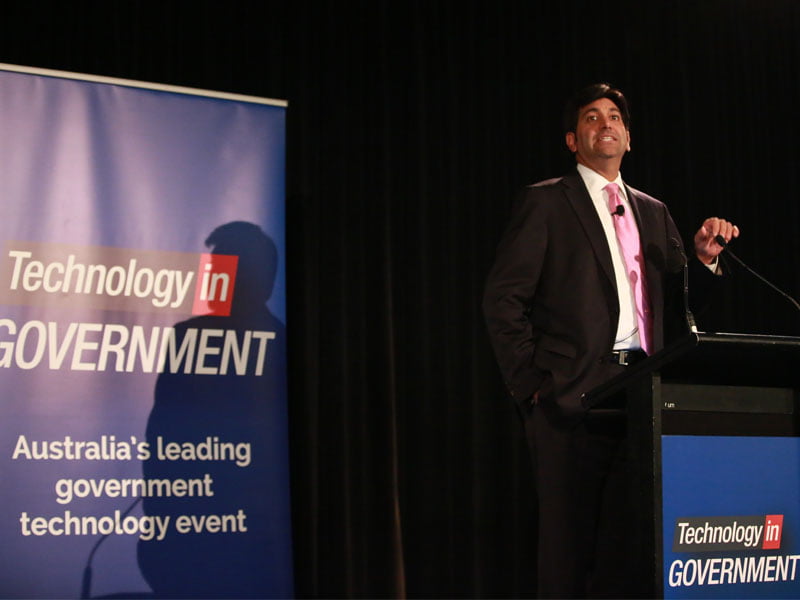If public service cultural issues lay at the heart of the challenge for digital transformation in government, then inflexible procurement practices sits right beside it, former US Government Chief Technology Officer Aneesh Chopra has told the Technology in Government conference in Canberra.
The two issues are inextricably linked. It is impossible to successfully implement a digital program without a top-down cultural shift in the way government thinks about service delivery. And service delivery changes cannot be empowered without reformation of the way government engages with vendors and service providers.
Top down cultural change is the pre-requisite. And the top means the top. Mr Chopra was appointed as the US’ first Chief Technology Officer by President Obama shortly after he assumed office in 2009. Unlike the Australian experience, where the CTO is buried within the public service at a First Assistant Secretary level within the Department of Finance, the US CTO is a direct report to the President.

“I would say that by the President appointing a CTO and asking that individual to report directly to the President sent a pretty powerful signal that this wasn’t just meant to be a case of ‘let IT handle it,” Mr Chopra said.
“Historically, is ever you have a conversation with a minister on any of these issues, they would say, let IT answer that.”
“What the President had signalled was that there was now a seat at the table right at the centre of policy-making (for digital transformation).”
Any policy that was to come to the attention of the President had to first be reviewed by 25 Presidential direct reports. That inferred tremendous power to the office of the CTO, where Mr Chopra was able to register a complaint about policy that was presented with “sub-optimal use of technology.”
That gave the US’ early digital champions a very big stick to wield in forcing cultural and institutional change. Still, it remains hard to do. The process in the US was started in 2009, shortly before the Australian efforts at transforming government service delivery stalled.
The other side of the coin for the drivers if government innovation is of course the carrot. And the US has introduced programs to “de-mystify” what transformation is.
“It’s not about IT. The biggest failure was a lack of imagination about what the world could be,” Mr Chopra said. “And the customer experience dimension is decidedly not about the IT.” It’s about humans, and about asking the right questions.
“It is decidedly not about getting IT to work a little bit better,” Mr Chopra said, “like can you get your uptime to improve from 99.2 per cent to 99.8 per cent. Rather it is about ‘Can you solve a problem that our country faces.”
“That is, can you improve the actual delivery of services from government?” This is not a question of IT.
Mr Chopra’s government had benchmarked the cost of installing residential solar in Germany against the US and found that the aggregated cost in the US was $1 billion more expensive than Germany. That’s after the cost of the panels, the design, the regulatory compliance across different levels of government, dealing with utilities, labour costs – everything.
“So that’s a billion-dollar hidden tax, if you will, against the solar industry,” he said. “So we had identified this challenge – the soft cost of solar. To design a solution, the office of the CTO offered a $10 million reward, a $10 million prize for creating a process and application that would enable a “7 day permit to plug” experience.
This prize was open to private sector participants, whether vendors or individuals, or internal innovators, or combinations of both. It provided a new way to innovate very specific and rapid change of niche government programs and initiatives.
“In fact today we have the authority in the US Government to issue up to $50 million in prizes for solving a problem or issue facing a Federal Government agency,” Mr Chopra said. “This is an important tool in the open government toolkit.”
Like the rest of the large scale enterprise world, governments have taken a lead from lean startups. Test, validate, then scale.
The only way this is possible inside government is through a top down reformation of the procurement system. Small projects, based on open data and open standards is what enables the smaller, more innovative companies and individuals to participate in important government work.
Do you know more? Contact James Riley via Email.

